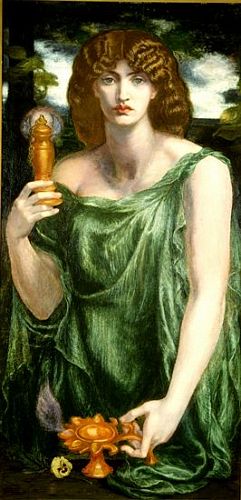
Devon, PA. During the next few months, I shall be writing on the centrality of beauty and art to a flourishing human life in general, to a sound theology, and also to any robust and compelling version of conservatism. The first installment of this project appeared in First Principles last Friday: “Art and Beauty against the Politicized Aesthetic.” Read it and weep.
Addressing the pressing need for conservatives to make their case in terms of narrative — which is the mother of all the arts — the essay concludes:
Complacent with rhetoric, they ignored poesis, the making of plots. By this, I do not mean conservatives were indifferent to narrative and story. On the contrary, they have shown themselves admirably enamored of the essential stories of our civilization at a time when the Left is signified chiefly by its hatred, terror, manipulation, and silencing of the past. But admiring noble stories told and telling stories are two different things. More to the point, someone who venerates the great and noble comes to do so in virtue of his having taken some path, having lived some story of his own; while instinct or intuition certainly play a role in one’s coming to admire greatness, that is not the whole story and such admiration is neither irrational nor incommunicable. But it has been treated as such, and so conservatives have frequently proved negligent in telling the stories that show the fusion of reason and intuition. Nobility is not self-evident and so if you want others to venerate what you venerate, you must equip them to do so by means of narrative. If you would do this, you must enter into the arts.
I have argued elsewhere that, because Mnemosyne is the mother of the muses, the recollecting of memories, the making of plots, is the activity in which all art forms engage (even music, despite superficial appearances to the contrary). Conservatives have proven themselves connoisseurs and conservators of the great stories on which a flourishing human culture depends, but in their veneration of the Great they have often admired the verdigris more than the substance; they have been derelict of duty in sowing in our culture new stories, new works that might strengthen our culture in the resources it needs if it is to recover not only what Burke called the moral imagination, but indeed all the precincts of memory, understanding, and will, which depend upon not only nobility but Beauty writ large. They must retranslate Kalon.












…..the fine arts AND craft are in need of greater Conservative attention….all a part of the more comprehensive intellectual approach that disdains the rampant anti-intellectualism of recent years. This is not a resort of the pedant however, the narrative must be alluring to the the fullest extent of the polity.
While you and I might not find complete agreement on the subject of some modern abstract art, I like the thrust…..A good fight Wilson!
Here’s a great article on sacred architecture that its author just forwarded to my attention: http://www.catholicnewsagency.com/column.php?n=912
Sabin: We don’t disagree on abstract art. I like abstract art in the same way I like the abstraction of a chair. Without it, we’d be in trouble, but we still need something to sit on.
“Veneration” is really too high-falutin for the needs of today. The people who can be expected to venerate beauty are already doing it.
More important is plain old exposure and immersion, and connecting beautiful things to non-Leninist ideas. Think Skinnerian conditioning.
I’ve discussed this in detail here:
http://polistrasmill.blogspot.com/2008/08/welchs-jam.html
[…] Politicized Aesthetic,” and the fifth and final section is on its way. Though he’s posted excerpts for discussion at FPR, the full text is at First Principles (parts one, two, three, and four). If […]
Comments are closed.